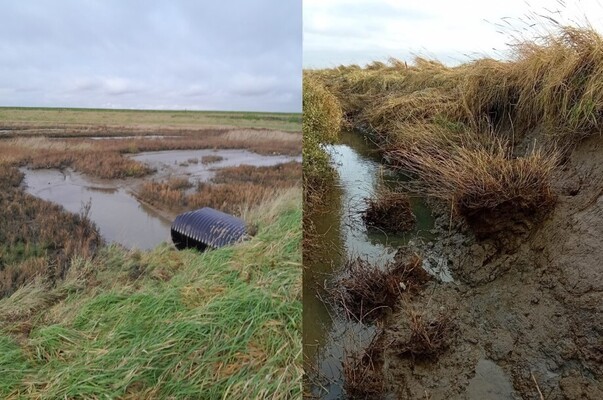J.C. de Smit1,*, V.A. Bax1, C.H. Cheng1, B. Walles1, W.I. van de Lageweg1
1 HZ University of Applied Sciences, Middelburg, The Netherlands
* Corresponding author: jaco.de.smit@hz.nl
Introduction
Old salt marshes are often dominated by sea couch (Elytrigia atherica), resulting in homogeneous landscapes with limited biodiversity. The dominance of sea couch can be controlled by grazing, but in the Southwestern Delta most salt marshes are unsuited for grazers. An alternative solution is to remove the top layer of the old salt marsh to promote the development of a new pioneer zone. This solution is only applied in small areas to ensure that enough high marsh remains for breeding birds. To realize N2000 quality goals, measures like this may need to be implemented more frequently in the future. It is therefore important to know how (quickly) the salt marsh recovers after a rejuvenation, and how the rejuvenation influences the morphodynamics of the (surrounding) salt marsh.
Objective and Methods
In 2020, a 120 x 220 m section of the salt marsh of Zuidgors was lowered from 2.5 m NAP to 2 m NAP. The rejuvenated area has since been enclosed by a small dyke and connected with the surrounding salt marsh via culverts. Institutes including the HZ University of Applied Sciences, the Netherlands Institute for Sea Research, and Wageningen Marine Research are actively monitoring the development of the rejuvenated area and its direct surroundings. The HZ has been conducting dGPS elevation measurements along transects and nearby creeks to observe the morphological recovery following the modification to the marsh. In addition, flow measurements (using Nortek ECO ADCP’s) have been conducted during stormy and normal conditions to assess flow pathways and water exchange between the rejuvenated area and surrounding creek system.
Results
Pioneer species including Salicornia europaea and Spartina anglica, and mid-marsh species such as Atrixplex halimus rapidly established within the rejuvenated area and are still the dominating species. Bed elevation recovery within the rejuvenated zone has been slow. So far, no significant increase in bed elevation in the pioneer zone has been observed. Also on the surrounding salt marsh platform there has been no noticeable development in bed elevation as a result of the salt marsh rejuvenation.
The creeks are, however, developing more actively. Creeks connected to the rejuvenation have been eroding prior to the rejuvenation, but now are eroding more rapidly. In contrast, other nearby creeks are silting up as a result of sedimentation on the adjacent tidal flat. At present, it is unclear whether the erosion is a result of the rejuvenation effort alone, as the creek system recently became connected to a creek on the tidal flat. ADCP measurements within the eroding creek system show a strong ebb-dominance, especially after a surge, which could explain the observed erosion. This could be exacerbated by the rejuvenated area, which acts as a tidal pool inducing prolonged drainage via the culverts into the tidal creeks after spring tides and / or storms.

Left: an impression of the rejuvenated area in Zuidgors. Right: bank erosion in a nearby creek on the salt marsh.


